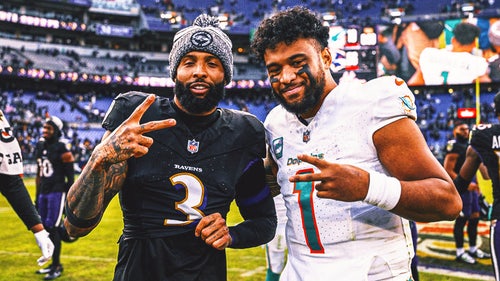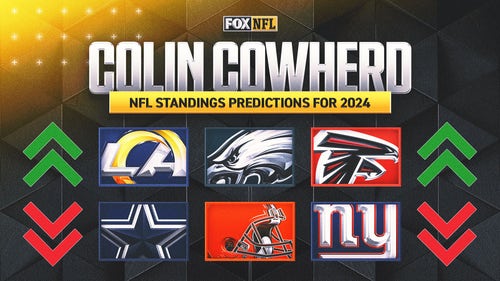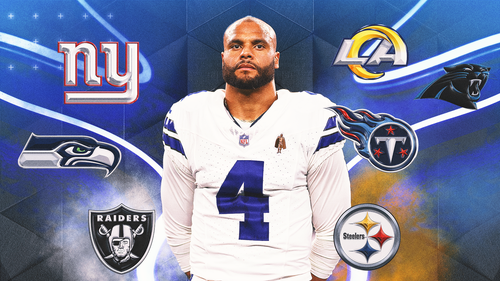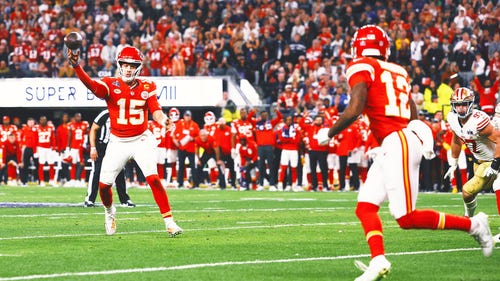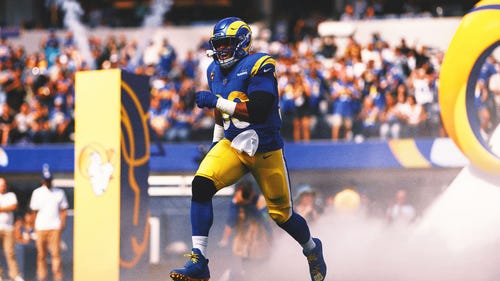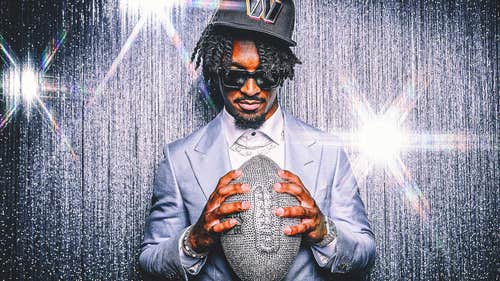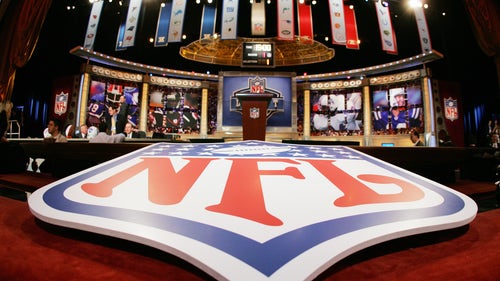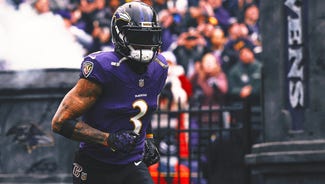
Jameis Winston vs. Marcus Mariota: Perception vs. reality

By Sam Quinn
In the not-too-distant past, there was a quarterback prospect who didn’t look quite like the others. He played at two schools. He ran almost as well as he passed. His arm was too weak, his body too small. Teams didn’t know what to do with him. So they ignored him. They didn’t consider the things he could do and magnified the things they thought he couldn’t. When draft day came, they took the quarterbacks who were taller (Ryan Tannehill). They took the quarterbacks with bigger arms (Brock Osweiler). Hell, they even took the quarterbacks who were 28 years old and possessed roughly the upside of a wilted cactus (Brandon Weeden). All because they looked the part. So the quarterback who was too small and too weak and too different tumbled down the draft board before being scooped up in the third round.
That quarterback was Russell Wilson.
NFL teams are terrified of what they don’t understand. When they look at a quarterback like Russell Wilson they don’t imagine how they can build an offense around his talents, they just see someone too short to run the failing offense they already have. They think that the laws of football are immutable, that quarterbacks have to be a certain height and make certain throws and be a certain player. Then Pete Carroll came around and took over the league with a quarterback who was different. And nobody seems to care.
Marcus Mariota is different. He is also far and away the best quarterback in this draft class. But Jameis Winston has been the preordained No. 1 pick since January because he looks the part. It’s amazing how far teams will go to convince themselves that means he’s the better player.
Winston has prototypical size at 6’4”, 225 pounds, but there’s plenty of evidence to suggest that prototypical size isn’t exactly prototypical anymore. Five of the top 10 quarterbacks in passer rating last year were 6’2” or shorter. That includes league MVP Aaron Rodgers and two more Super Bowl winners in Drew Brees and Wilson.
Mariota actually wouldn’t fall within that group—he’s 6’4”, like Winston—but the common misconception is that his leaner 215-pound frame combined with his proclivity for running means he’s certain to get injured. But the new wave of running quarterbacks—apart from Robert Griffin III, obviously—have actually stayed fairly healthy. Cam Newton has missed two starts in his entire career and that was because of a car crash. Colin Kaepernick and Russell Wilson have never missed a single start, and even if Newton and Kaepernick are heavier than Mariota, it goes to show that running does not, in itself, cause injury. As long as a quarterback is careful about protecting his body by sliding, and maybe adding a bit of bulk in the weight room to be safe, staying on the field is not some herculean task accomplishable only by those who dare not leave the womb of the pocket. Considering Mariota has never missed a single start, that doesn’t seem unreasonable.
Neither does the notion that Mariota could operate within a professional offense. Note that I said professional, not pro-style, because the “pro-style” offense Jameis Winston ran at Florida State doesn’t really resemble the style of professional offenses anymore, at least not good ones. How often did you see Denver or Green Bay line up in the I-formation last year, hand the ball off to a halfback following a fullback through the 4-hole?
NFL teams think that the laws of football are immutable, that quarterbacks have to be a certain height and make certain throws and be a certain player.
It’s pretty rare. Instead, successful NFL offenses have started stealing elements of Chip Kelly’s pace-and-space spread offense. Just look at the New England Patriots. They spent the early part of Tom Brady’s career running an offense as vanilla as any you’d see in football before transitioning into a run-and-shoot system revolved around chucking it to Randy Moss. After Moss left, they took the shoot part out of their system and started running a warp-speed West Coast/spread hybrid that emphasized quick reads, horizontal routes and preventing defenses from subbing. In 2010, while still transitioning, they finished 21st in the league in plays per game. From 2011–14, they finished second, first, second, and fifth, respectively. Does anyone want to argue that Tom Brady can’t play in the pros?
Of course not, that would be stupid. Tom Brady is one of the greatest professional quarterbacks of all time, and he has stayed at the level of play because of his own adaptability and that of his head coach. When Bill Belichick sees a changing football landscape he jumps ahead of the curve rebuilds his team around it. There’s a reason he has shared training camp practices with Kelly and has spoken so effusively about him in the past. Football is trending fast, so Belichick built a team that plays as fast as anyone. Mariota’s offense is a lot closer to what the best pros are running now than Winston’s was. Four of last year’s five fastest offenses—Philadelphia, New Orleans, Indianapolis, the Giants, and Patriots—finished in the top nine in points per game, and the fifth (the Giants) likely would have had they been at full strength for even half of the season. The fastest offense of 2013 (Denver) scored more points than anyone in history. This isn’t going away.
Of course, Mariota doesn’t look like Brady as a player because he likes to run. His scrambling disrupts the homogenous ideal of the perfect quarterback to such a degree that nobody wants to acknowledge all of the things Mariota does so very much like Brady. One of Brady’s greatest strengths as a passer is, for example, his ability to limit turnovers. His career interception rate is 2 percent. Running a very similar offense without the security blanket of Rob Gronkowski, Mariota’s career interception rate is just under 1.2 percent. In fact, Mariota’s best receiver at Oregon was probably Josh Huff, a third-round pick of the (surprise, surprise) Philadelphia Eagles. Winston spent his freshman season throwing to future first-round pick and current NFL star Kelvin Benjamin.
Without Benjamin to catch vaguely accurate jump balls, Winston threw more interceptions in 2014 than Mariota had in his entire three-year career. Of his 467 pass attempts last season, 18 were intercepted for a rate just under 3.9 percent. Are those interceptions somehow less damning because they started as snaps under center? For all of the posturing we’ve heard about Winston’s football IQ, there’s not exactly much evidence of great on-field decision-making.
We do have quite a bit of evidence about Winston’s off-field decision making, though, and it’s not good either. The common lukewarm take is that Winston has grown up, that going through everything he has (nearly entirely self-inflicted, by the way) somehow made him mature. Well, even if that’s true, would you rather give someone a fifth chance, or sixth chance, or honestly I’ve lost count so let’s just round up and call it a baker’s dozen’s worth of chances, or have a quarterback who’s never needed a second chance and probably never will?
This shouldn’t even be a question. Winston made sense in an NFL that should no longer exist, one strictly uniform in everything from body type and offensive scheme to disrespect for women, but Mariota actually fits into the league we’re starting to see now, one where the best teams think differently and schemes vary and having basic human decency counts for something. Mariota grossly outperformed Winston on the field. He has every intangible you could possibly ask for. But Winston looks the part, and for better or worse, most teams would rather have the guy who looks like an NFL quarterback than the guy who plays like one.
More from The Sports Post:






































































































































